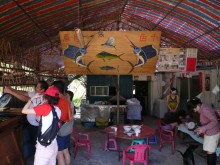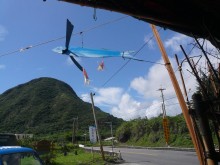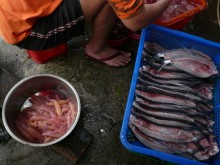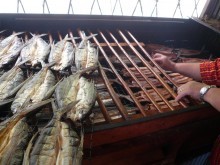TELDAP Collections
| Sugarcane-Smoked Flying Fish |
|
Excellent Work of the 5th Cyber-Island Photography Contest
The store consists of a shop, factory, parlor, and owner’s living quarters. On the center of the beautiful billboard are the flying fish, Common dolphinfish, and bullet mackerel. To their sides are the Atlantic sailfish.
Carefully cut open the flying fish and clean them before immerse them in pickling salt.
Three-level smoker rack The skill of the owner’s wife lies in moving fish in different sizes and stages of smoking to their proper places on the rack.
The store “Sugarcane-Smoked Flying Fish” is located by the coastal highway outside Shitiping Fishing Port. With its proximity to the port, the store gets a steady supply of just-caught flying fish. After being killed, cleaned, salt pickled, and smoked for more than eight hours, the fish transforms into delicious dried fish. In fact, flying fish is one of the cheapest fishes since it doesn’t taste good. Its red meat is full of hemoglobin, resulting in dryness, a fishy smell, and an iron taste. But after being transformed into dried fish through the process of salt pickling and smoking, the fishy odor becomes a thick seafood flavor. The flavor is locked inside the fish and the fish is preserved for a long time. The dried fish can be eaten as snacks or used to flavor soups, especially the aboriginal food “taro and flying fish porridge.” This store is owned by an aboriginal family. We met the husband and wife at the fishing port and walked with them along the coastal highway to their store. The store consists of a shop, factory, parlor, and owner’s living quarters: a traditional four-in-one aboriginal store. Under the gentle ocean breeze, the family chatted by a round table and a group of children ran around to play. As a friendly gesture, the owner idle talked with us, the tourists, while he tended to the fire. He revealed that the fishing resources are being depleted and the fishermen are facing difficulties.
|

















